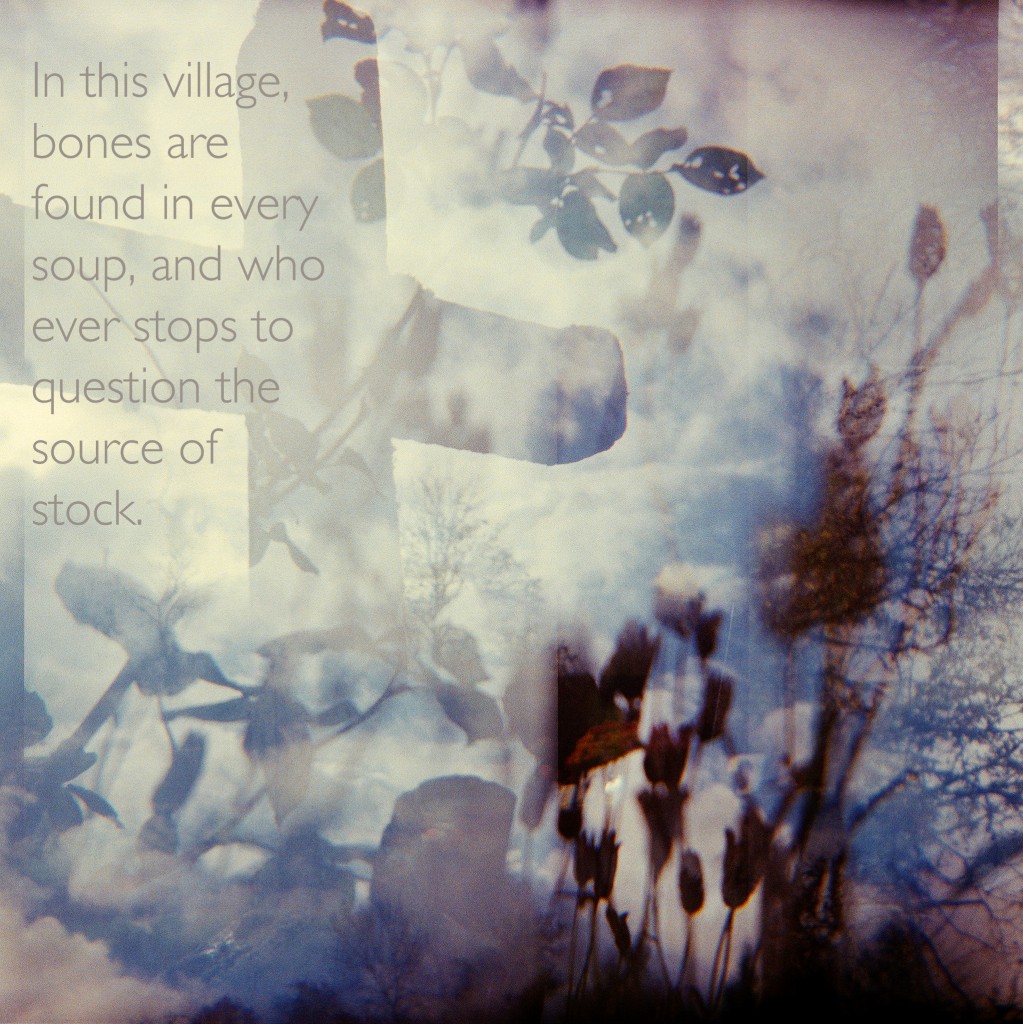April 19, 2010

from the FOSSOYEUR / GRAVEDIGGER poem sequence that ponders the european witch trials in France. This photograph is from the cemetery in Serecourt, France. (c) quintan ana wikswo
At a certain age, my bones began stretching out far and fast. I uncannily evolved from a compact creature to a spindly, spidery sort of being.
Fast-growing bones are searing – a kind of carbolic burn. Chemical, electric, and primordial.
All appendages were tense and unpredictable. The skin attempted to bridge each day’s new expanse.
I would hang upside down in low-slung maple trees trying to stretch out the fault lines in my joints – the tectonic plates of adolescence.
The way a face feels when it’s upside down: some sort of weighty instability of flesh on architecture. As though the body will simply slide off the apparatus and collapse in a gelatinous mess down below.
Growing taller only seemed fruitful if it came with flight: we had a craggy series of limestone cliffs behind the house, and I stationed myself there for hours – poised for flight. It never happened.
My bones were the problem – too long, and heavy, and not hollow. And skin – too thin, and useless for flight. Part of me believed that if I stood at the cliff long enough, I would begin to grow feathers. They never appeared. I blamed this on a lack of personal willpower. By willpower, I meant a failure in my practice of magic. (Such are the curious cominglings of a childhood steeped in calvinist paganism.) At the edge of a cliff, it’s simple to see the limitations of the human body. Where our boundaries lie.
Because of this, I despised birds until quite recently.
Jealousy impedes growth.
Grounded with my growing bones, I watched with dismay as the distance between my eyes and the earth tangibly expanded. My head kept rising up, inches upon inches upon inches – always further away from the soil. The soil crept along with its secrets, always underfoot, just doing its job, taken for granted and thus never truly noticed – a spectacular and genius ruse.
I didn’t want this exile: in winter, the shale would separate from the dirt when the ground froze, and microscopic rocks would form brittle, narrow towers as the water crystals pushed them up and away from the frozen mud. Frogs – fully alive – would hibernate in a slimy subterranea, and tunnel their way through the dew roots of wildflowers in the spring. When the heat came, the brush crawled with rapacious guests: locusts and ticks, cicadas and snapping turtles, chiggers and copperheads. Things that were going to die, died gracefully in the autumn: leaves and vines in withered husks. Rabbits and foxes curled in wait for dessication.
I took interest in the field horses – at last, something taller than myself, and still a bit stubborn and fierce. But they put their heads down to the earth to eat. And they ripped at it with their massive jaws, gnawing away at the life in it. No spoons, no stews. They took it down to the roots, gasping for it.
The children often found bones wedged under rocks, in the hollows of fallen trees, alongside the road, jutting out of the ground. Teeth and beaks were welcome discoveries. Usually, we couldn’t attribute them to any particular creature, despite trying.
The unidentified bones were the most magnificent gifts. To know that we knew nothing. That the earth had once again won, with its mysteries and mythologies revealed as truth: who knows what really lives in the woods. What hasn’t yet been found.
I treasured these bones as talismans. I kept them close. I held onto them like beacons, like calcium flares for the unknown.
